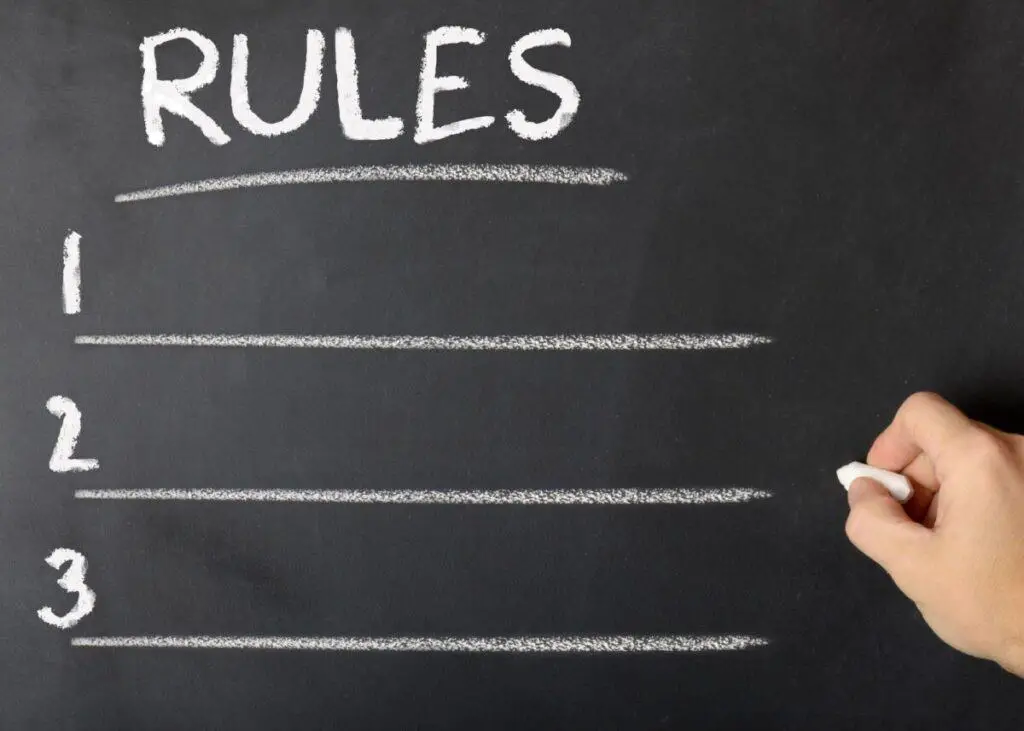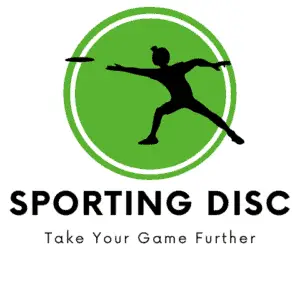Disc golf has some specific rules when it comes to throwing a disc after it’s out of bounds, in a hazard, or even lost. These are drop rules and they can be a little confusing.
There are 7 common examples of times when a drop rule will be used in disc golf. You’ll want to be sure to be aware of each scenario when it comes to drop rules for disc golf.
Table of Contents
Here is What the Drop Rules Are For Disc Golf
The drop rule for disc golf means that a player throws from a marked lie in bounds. The spot of the lie is determined by the nature of the penalty. Penalties can include out-of-bounds, missing a mandatory, hazard, or an abandoned throw. Drop zones are designated areas on the course where a throw can be made under certain conditions.
This post will cover the drop rules for 7 examples that might be encountered during a round of disc golf.

Can You Take a Drop in Disc Golf?
Yes, you can take a drop in disc golf. A drop in disc golf is similar to ball golf. A drop is used when taking relief, usually from a penalty.
Consider the example of if you were to throw the disc in an out-of-bounds area. Disc golf rules state that you’ll have to drop the disc from the point where it was last in bounds.
This means that where the disc crossed over from in-bounds to out-of-bounds is where a drop is established.
There are going to be other times when you will need to take a drop besides just out-of-bounds. I’ll get into more later with several examples.
Remember though, that in disc golf your lie will always be from in-bounds. This is the main reason why a drop is permitted. It’s so you’re not throwing the disc from an out-of-bounds area.
What is a Drop Zone in Disc Golf?
When a drop is needed for a throw, there is also an option for a drop zone to be used. In certain situations, or if there is one available, a drop zone can be used instead of the standard drop.
The area to be used as the drop zone can be marked with a line, a marker, or any other object.
A drop zone can be played one of two ways. The drop zone can be played as a normal lie, or played similar to a shot from the teeing area.
In a tournament setting, the Director will be the one to mark the drop zones and designate how they should be played.
Not all disc golf courses will have a drop zone, and they are not always required. In some cases, a drop zone on certain courses might make more sense, especially if the out-of-bounds areas for certain holes make it hard to see where the disc might have crossed over out-of-bounds.
The advantage of using a drop zone in this way is it takes the guesswork out of determining where the disc was last in-bounds before crossing the parallel line out-of-bounds.
What Does DZ stand For in Disc Golf?
A drop zone is sometimes referred to as just DZ at a disc golf course and signage at disc golf courses. If you see an area marked for DZ, know that there are drop zones located on the hole.
Remember, the drop zone, or DZ, can be used in case of out-of-bounds throws, missed mandos, or other situations.
7 Times When You Will Use a Drop or Drop Zone
Most of the time, a drop will be taken only after you’ve made a throw that’s also resulted in a penalty. But, all of these circumstances are not always the same.
Of course, for each one of these examples, there is a one-stroke penalty attached. But, the penalty won’t affect the drop rules.
Below are the 7 most common situations in disc golf when a drop or a drop zone is used.
1. Out-of-Bounds Throw
In disc golf, there are always going to be areas of the course that are designated as out-of-bounds. A disc thrown in the out-of-bounds area can’t be played from the out-of-bounds (OB).
The PDGA rules say this about OB:
“An out-of-bounds (OB) area is an area designated by the Director from which a disc may not be played, and within which a stance may not be taken. The out-of-bounds line is part of the out-of-bounds area. Any area of the course that is not out-of-bounds is in-bounds.“
So, what to do if your disc lands OB? At this point, you’ll have two options that concern a drop.
You can either establish a lie with a marker disc up to one meter away from the OB line where the disc was last in-bounds. The second option is to throw again from the previous lie.
If you’re playing a course with a designated drop zone, you can also have the option to make the next throw from the drop zone.
2. Island Hole
An island hole is a very common area to find a designated drop zone. If you’re unfamiliar with an island hole, it’s a basket that is surrounded by a small in-bounds playing surface and surrounded by out-of-bounds.
If you’re throwing from a tee onto the island hole and miss the throw OB, your next shot will then be from the drop zone. The drop zone will normally be located in the OB area surrounding the island hole.
If there is no drop zone at an island hole, your next throw will be again from the tee. Unfortunately, you’d still have to apply the one-shot penalty to your score.
3. Missed Mando
A mando is short for a mandatory. What the mando does is restrict the discs route to the target, or the basket.
If your disc is thrown to the wrong side of the mando, you’ll have to throw from the drop zone or throw again from the previous lie.
A mando can be many objects or structures, like a tree, a pole, or even a building.
4. Hazard
Unfortunately, a hazard is another area that will result in a penalty. If you throw your disc into the hazard, you’re going to get a penalty, but you won’t be able to drop at a previous lie or throw from a drop zone.
5. Abandoned Throw
During disc golf, you have the option to “abandon” your most recent throw. All you have to do is state your intention to the group and take a one-shot penalty.
Next, you’ll have to drop from the same lie that the abandoned throw was made, or if there is a drop zone for abandoned throws you can throw from the drop zone instead.
6. Lost Disc
If you’ve thrown your disc OB and can’t locate it, you can declare the disc lost. After three minutes of looking for the disc in the area, it was believed to have landed, the disc can be declared lost.
After the disc is declared lost, you can drop at the previous lie, or throw from the drop zone instead of the previous lie.
7. Two-Meter Rule
The two-meter rule will not always be in effect during play unless it’s declared by a Director. But, it’s still important to know what the drop rules are for this situation if you’re affected by it.
If you were to throw your disc into, or onto an object where the disc comes to rest at least two meters above the ground not only will you have a penalty, but the disc will have to be played from directly below where it came to rest on the object.
This can be a little tricky because the disc should only be measured from the lowest point of the disc to the playing surface directly below it.
Final Thoughts | Drop Rules For Disc Golf
Drop rules in disc golf will differ slightly depending on what the situation is. Most penalties will also give you an option to throw your next shot from a specified drop, previous lie, or a designated drop zone.
But there are other times, like when the disc comes to rest in a hazard, that you’re not going to have any choice but to throw from the hazard.
The most important thing is to know and understand what the drop rules are and when a drop zone can and can’t be used during a round of disc golf.
